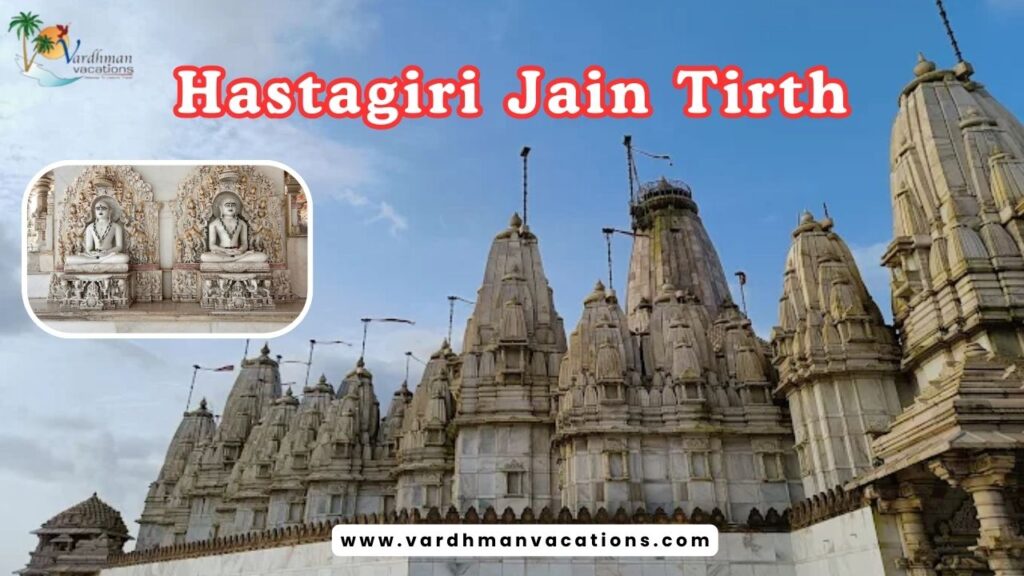Baoli, also known as stepwells, are wells with steps that go down to the water. They are mostly found in the western part of India and their history goes back to the Indus Valley Civilization. Stepwells were built not just for beauty but also for practical use. By digging deep into the ground, these Baolis stored water throughout the year. The steps made it easy for people to collect water and also served as places for worship.
In ancient times, there were thousands of Baolis across India. Even today, more than 2,000 stepwells still exist. Though many are no longer in daily use, they still hold water and remain as fine examples of India’s architectural heritage.
Here is a list of some of the most famous and ancient stepwells in India.
Chand Baori, Rajasthan

Located in Abhaneri village, Rajasthan, Chand Baori is one of the most famous stepwells in North-West India. It attracts thousands of visitors every year for its stunning architecture. This stepwell was built by King Chanda of the Nikumbh dynasty in the 9th century AD.
Chand Baori has more than 3,500 steps that go down about 20 meters, making it the deepest stepwell in India. It was originally built as a source of water and is dedicated to the Goddess of Joy and Happiness. In ancient times, it was also a place where the royal family mingled with locals, as the stepwell stayed much cooler than the surrounding area.
With its 13 levels of steps, Chand Baori looks truly impressive, especially when viewed from a distance.
Adalaj Baori, Gujarat
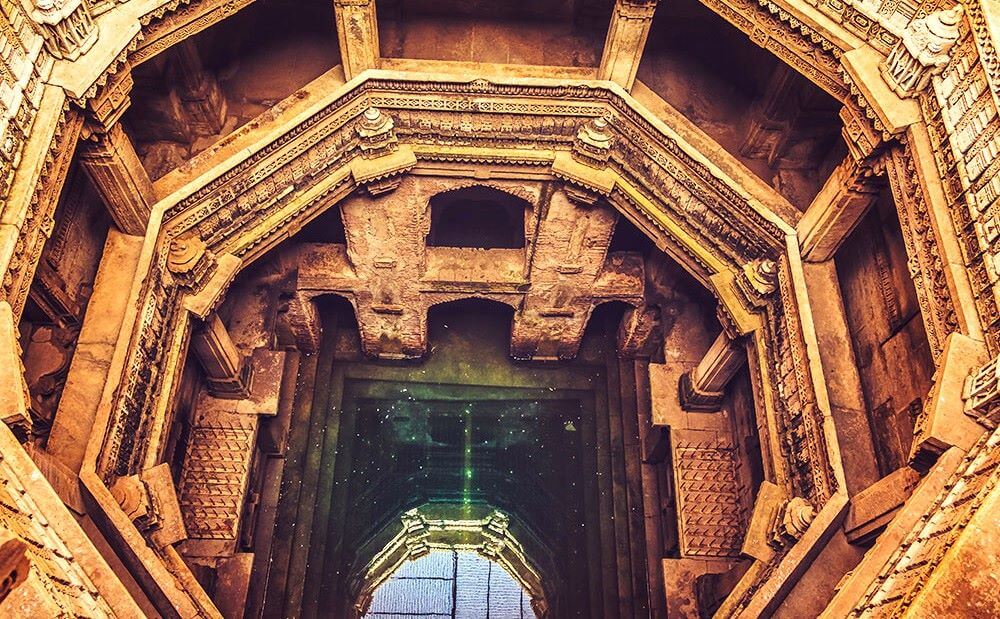
Adalaj Baori, also known as Rudadevi Stepwell, is one of the most famous stepwells in India. It is located in the village of Adalaj, near Gandhinagar in Gujarat. Built with sandstone, this stepwell is a fine example of Solanki architecture.
The stepwell is five stories deep and beautifully decorated with carved windows, brackets, and images of Hindu and Jain deities on its walls. According to historical records, it was built in 1498 by Queen Rudadevi in memory of her husband Rana Veer Singh.
Today, Adalaj Baori is not just an architectural wonder but also a popular tourist attraction in Gujarat.
Rani ki Vav, Gujarat
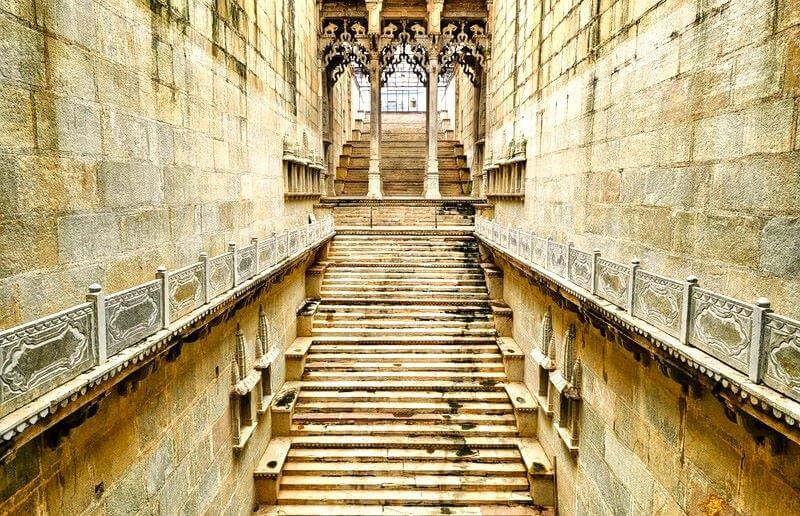
Located in Patan, Gujarat, Rani ki Vav is a UNESCO World Heritage Site. This stepwell was built in the 11th century during the reign of the Chalukya dynasty, near the banks of the Saraswati River.
According to legend, it was constructed by Queen Udayamati in memory of her husband, King Bhima I. The stepwell reflects the Maru-Gurjara style of architecture and is decorated with finely carved sculptures. On the walls, you can see engraved images of different avatars of Lord Vishnu, showing that it was also used as a place of worship.
Rani ki Vav has seven levels of steps, each adorned with religious figures and intricate structures. Its detailed carvings and grand design make it one of the most magnificent stepwells in India.
Agrasen ki Baoli, New Delhi
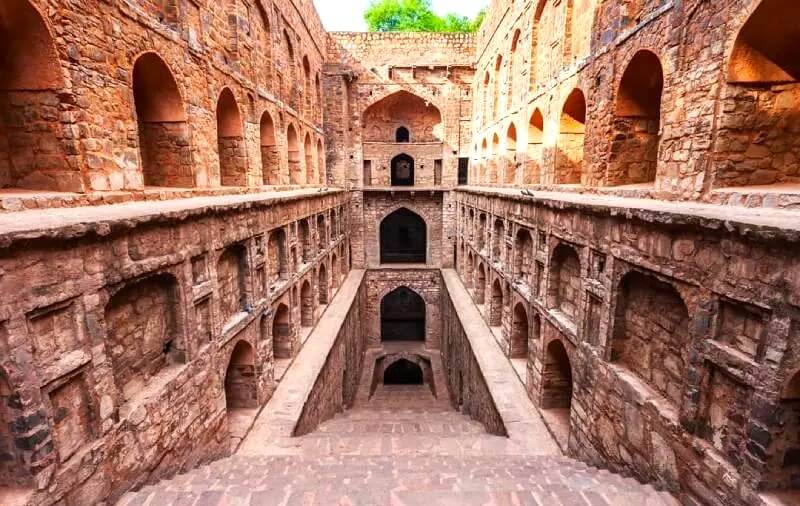
Agrasen ki Baoli is one of the most popular stepwells in India. It is located near Connaught Place in Delhi and has 108 steps spread across three levels that lead down into the well.
Based on its architectural style, it is believed to have been built during the Tughlaq or Lodi dynasty. According to legends, it was founded by Maharaja Agrasen, whose name also appears in the ancient epic Mahabharata.
Today, this historic stepwell is protected by the Archaeological Survey of India (ASI) and is a major tourist attraction in the capital city.
Gol Baoli, Haryana
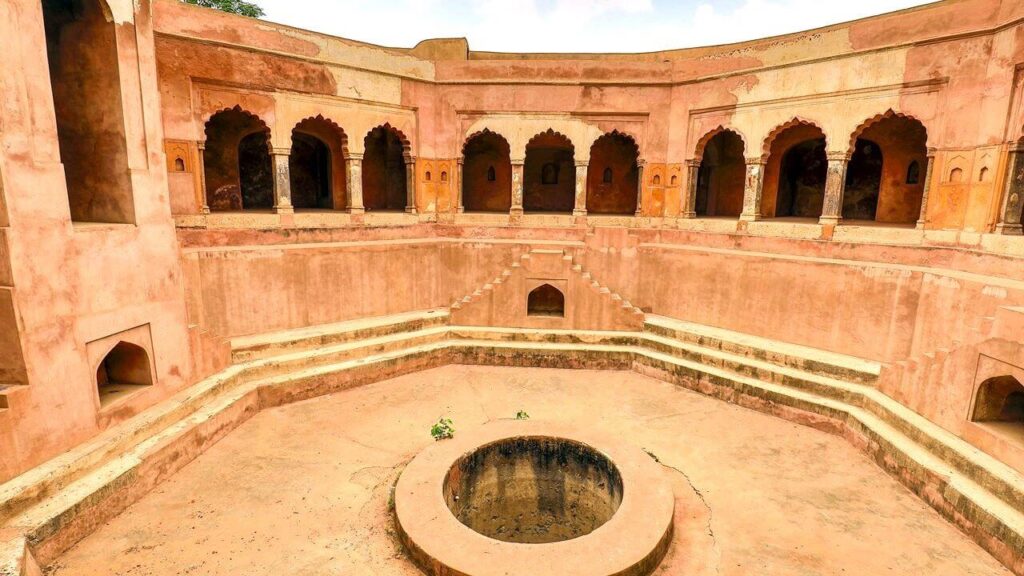
Located in Farukhnagar town, Haryana, Gol Baoli was built in the 18th century by Ghaus Ali Shah, a local chief under Mughal ruler Farrukh Siyar.
This stepwell is octagonal in shape and has stone steps leading down to a central water tank. In the past, it was mainly used by the women of the royal family for bathing, and a special chamber was also made for them to relax.
Today, Gol Baoli is protected by the Archaeological Survey of India (ASI) and remains an interesting piece of Mughal-era architecture.
Pushkarani, Karnataka
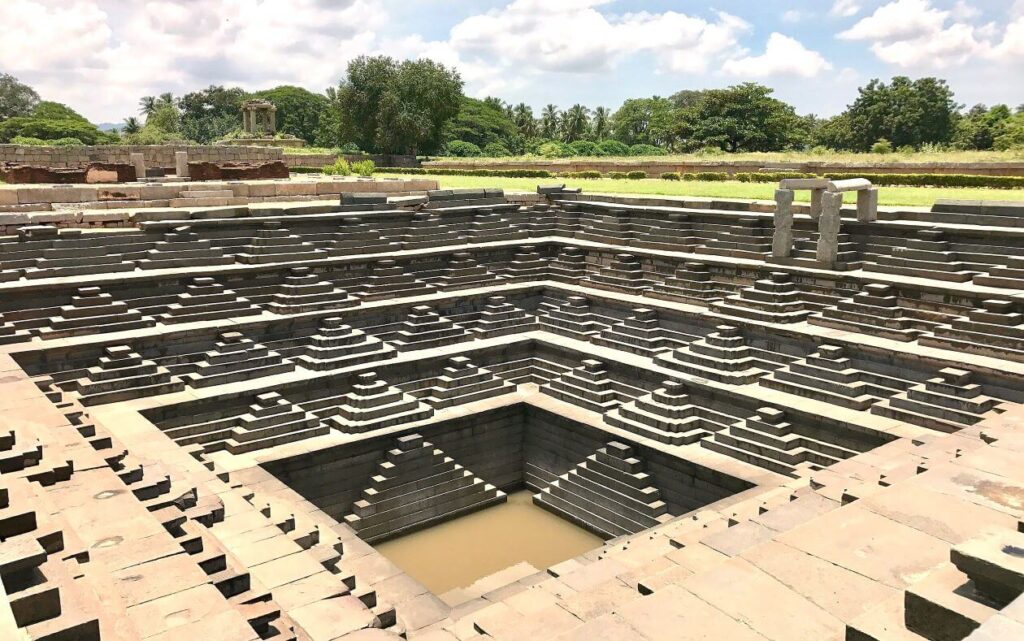
Located in Hampi, Karnataka, Pushkarani is a historic stepwell built during the time of the Vijayanagara Empire. These sacred tanks were usually constructed next to temples and were used for religious rituals and worship by the local people.
In earlier times, Pushkaranis were also the venue for annual boat festivals, making them important for both cultural and spiritual gatherings. Today, many of these stepwells lie in ruins, yet they continue to attract tourists from around the world.
The most notable Pushkarani is the one in the Royal Enclosure near the Hazara Rama Temple, which is considered the most beautiful and well-preserved stepwell in Hampi.
Mata Bhavani’s Vav, Gujarat

Located in Ahmedabad, Gujarat, Mata Bhavani’s Vav is one of the oldest stepwells in India. It is believed to have been built during the Chalukya dynasty around the 11th century.
This baoli has three levels of steps, and later a shrine dedicated to Mata Bhavani was added near the stepwell. While its design and architecture may not be as elaborate as other famous stepwells, it still holds great historical and cultural importance.
Rajon ki Baoli, New Delhi
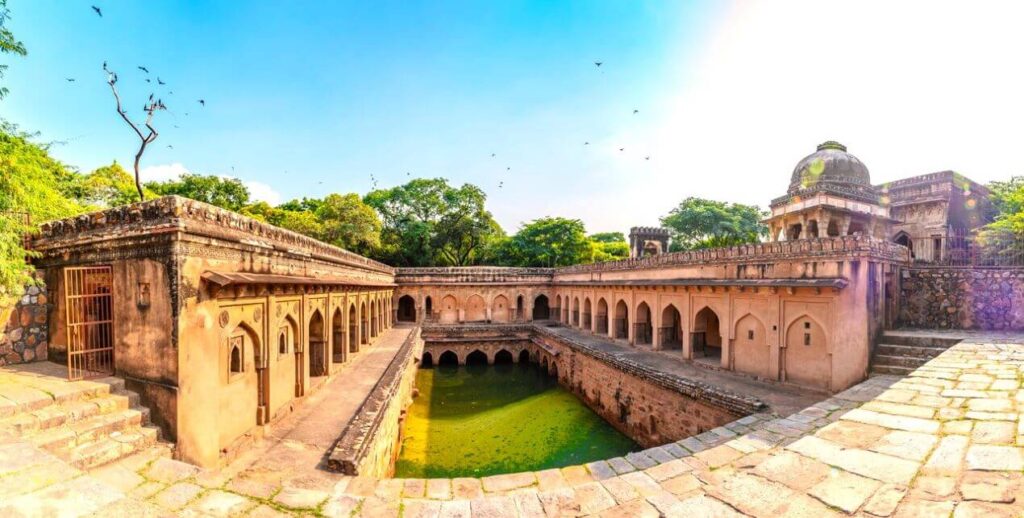
Located in the Mehrauli Archaeological Park, New Delhi, Rajon ki Baoli dates back to the 16th century. This stepwell was built by Daulat Khan for the use of masons (rajmistries), which is how it got its name.
The baoli is rectangular in shape with four levels of steps leading down to the water. Beside it stands a mosque, also built by Daulat Khan, which he used as a place of peace and prayer.
Although Rajon ki Baoli is now in a ruined state, it still remains an important piece of medieval Indian architecture.
Surya Kund, Modhera Stepwells, Gujarat
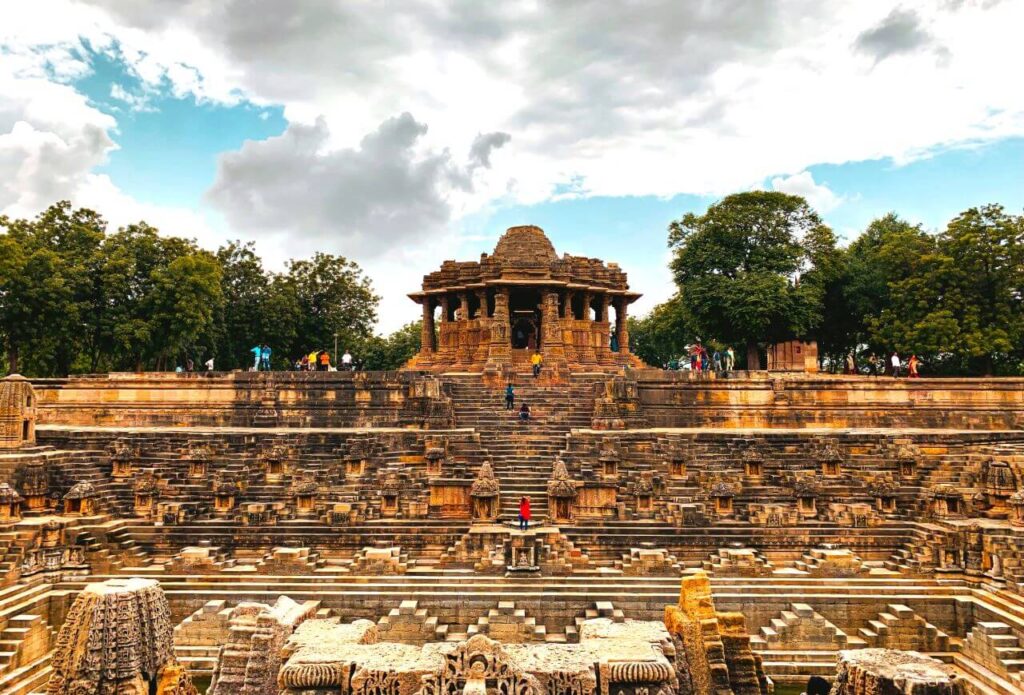
Located within the premises of the Sun Temple in Modhera, Gujarat, the Surya Kund is one of the most beautiful stepwells in India. The Sun Temple was built in the 11th century during the reign of Bhima I of the Chalukya dynasty.
This stepwell is rectangular in shape and has four terraces with steps leading down to the reservoir. What makes it truly special are the 108 miniature shrines dedicated to Lord Ganesha, Lord Vishnu, and other deities that adorn its walls.
The Surya Kund was designed not only as a water reservoir but also as a place for religious rituals and ceremonies. Today, both the Sun Temple and the stepwell are protected by the Archaeological Survey of India (ASI), and the site attracts thousands of visitors every year.
Toor Ji ki Jhalra, Rajasthan
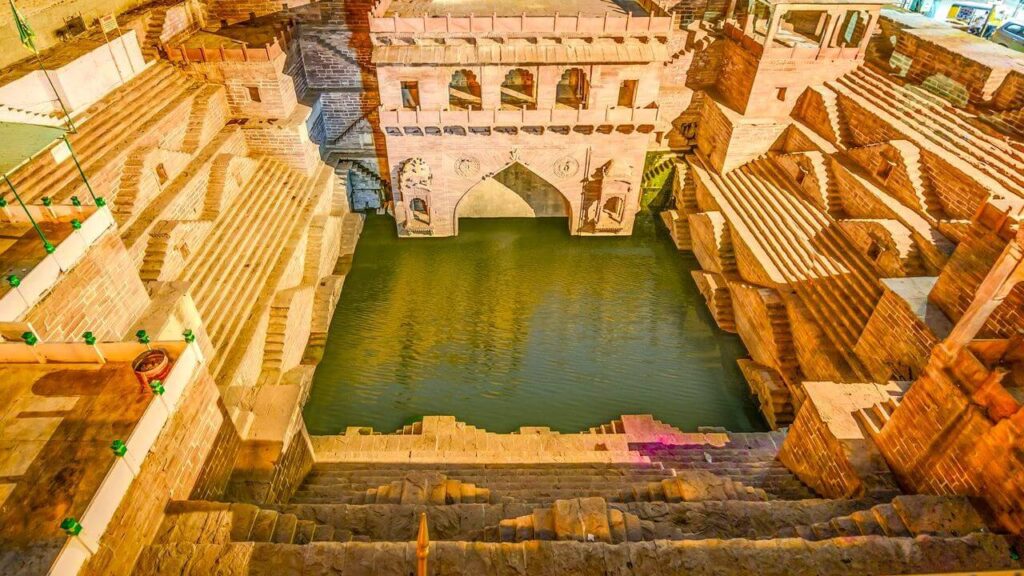
Located in Jodhpur, Rajasthan, Toor Ji ki Jhalra is a historic stepwell that once served as a vital source of water for the locals. Its origins date back to the 18th century, and it was built using red sandstone. The walls of the stepwell are beautifully decorated with carvings of animals and deities.
Considered one of the finest stepwells in India, Toor Ji ki Jhalra had fallen into neglect and was filled with debris for many years. However, it has recently been restored and cleaned, bringing back its old charm. Today, it is a popular spot for locals and children, who often enjoy dipping in its cool waters while admiring the beauty of this 18th-century structure.
Jachcha Ki Baoli, Rajasthan
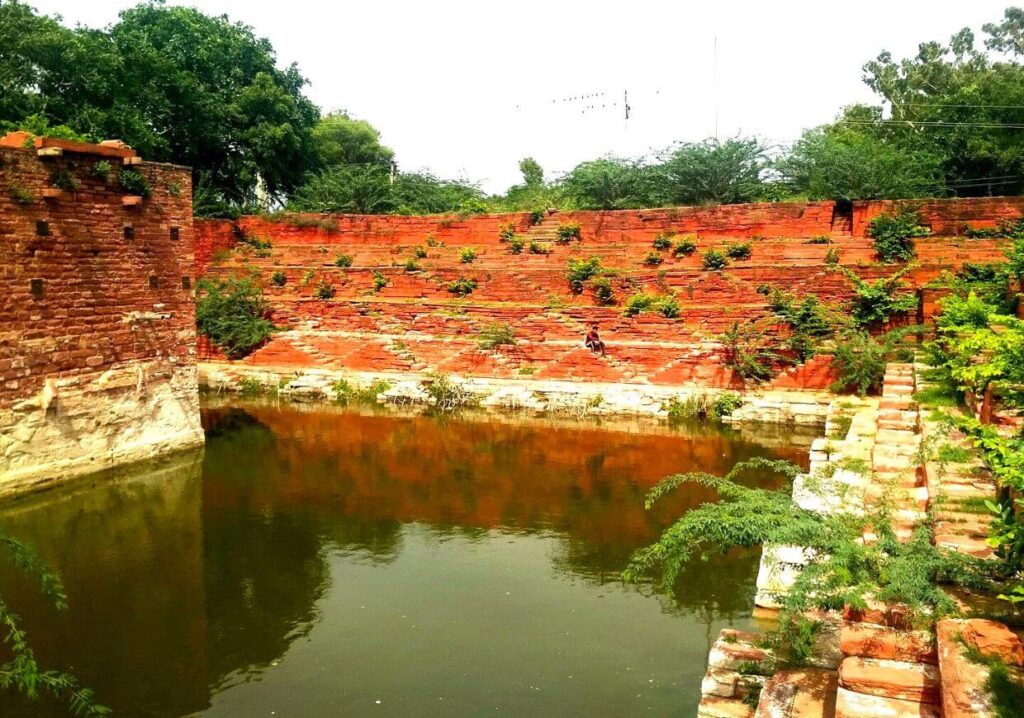
Situated in Hindaun city, Rajasthan, Jachcha ki Baoli is considered the largest stepwell in India. It dates back to the 14th century and was built by Lakkhi Banjara.
According to legend, during its excavation no water appeared at first. A local saint then predicted that the stepwell would fill with water only when a Jachcha (pregnant woman) gave birth nearby. When this happened, the baoli filled with water, and that is how it got its name.
There are many interesting stories linked to Jachcha ki Baoli. One of the most popular beliefs is that its water is so pure that clothes washed here need no soap or detergent.
Dada Harir Stepwell, Gujarat
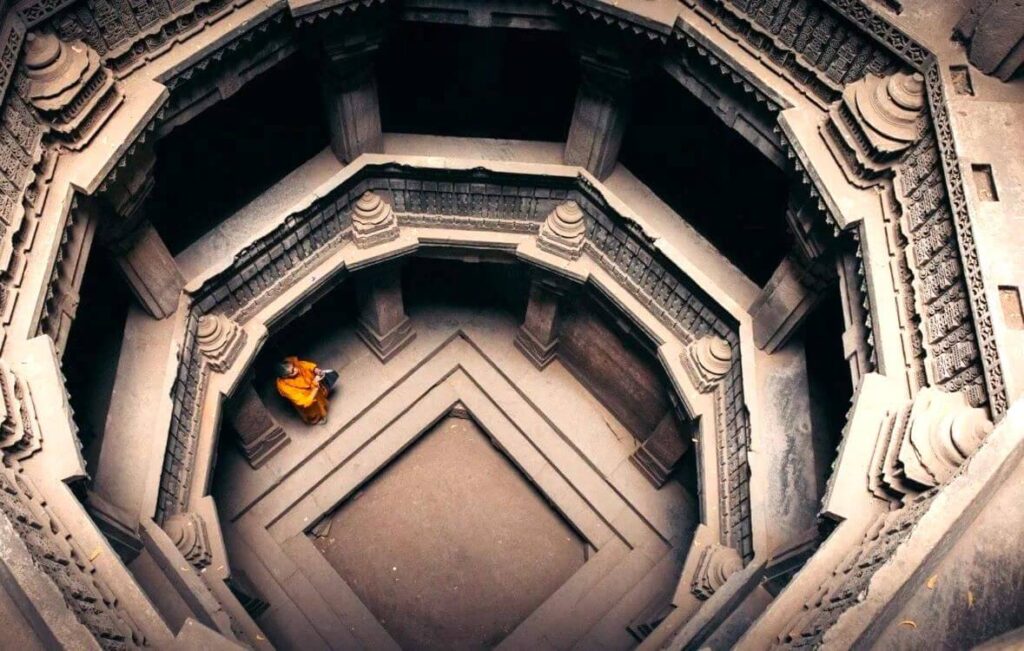
Built in 1499 AD by Dhai Harir, a household lady of Sultan Begada’s harem, the Dada Harir Stepwell was originally constructed as a retreat during the hot summer months. No matter the season, the inside of the stepwell remains much cooler than the outside temperature.
Located in the Asarwa area of Ahmedabad, Gujarat, this baoli is a fine example of Solanki architecture. It is five stories deep and octagonal in shape. According to an inscription, Dhai Harir spent nearly 3,29,000 Mahmudis (around 3,00,000 rupees in 1499 AD) to build this stepwell.
While the ground level may look plain, as you move deeper inside, you can see the intricate carvings designed to reflect sunlight beautifully within the structure.
Bara Imambara, Shahi Baoli – Uttar Pradesh

Located in Lucknow, Uttar Pradesh, the Shahi Baoli was built in 1784 by Nawab Asaf-ud-Daula. It is a fine example of Indo-Islamic architecture and was originally constructed as a water reservoir.
The baoli has five stories and once provided cool water to the people of the region. Today, it no longer serves its original purpose but stands as a popular tourist attraction within the Bara Imambara complex.
Raniji Ki Baoli, Rajasthan
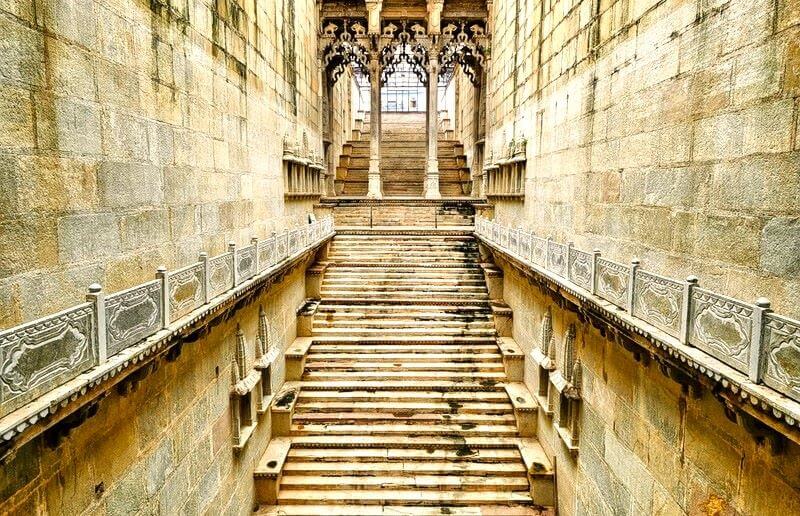
Located near Kota, Rajasthan, Raniji ki Baoli is one of the ancient stepwells of India. It was built in 1699 by Rani Nathavati Solanki, the younger queen of Rao Raja Anirudh Singh.
The stepwell is about 46 meters deep and is decorated with beautiful carvings on its pillars and entrance gate. Raniji ki Baoli is a multi-storey structure, with small places of worship on each floor, making it both an architectural marvel and a spiritual site.
Panna Meena ka Kund, Rajasthan
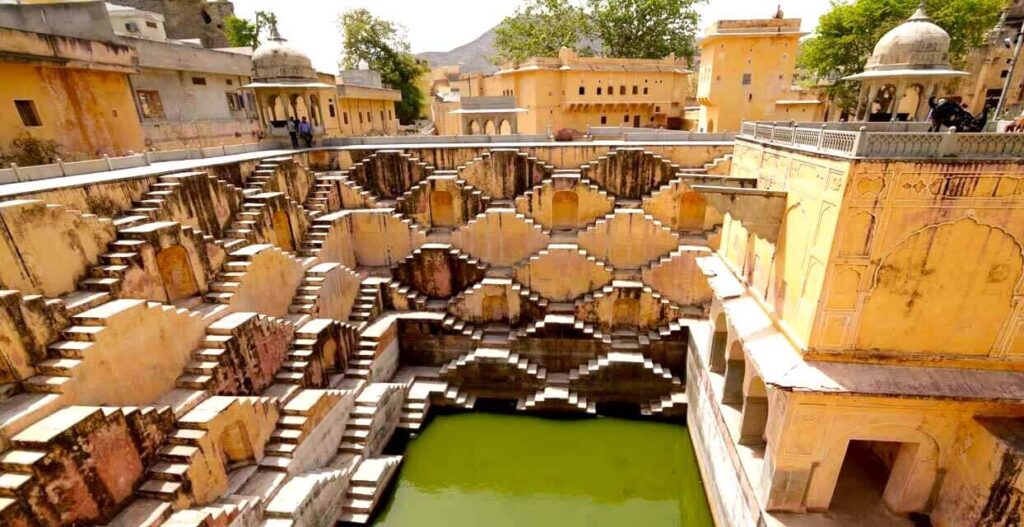
Located in the Pink City of Jaipur, Panna Meena ka Kund is one of the ancient stepwells of Rajasthan, though still quite unexplored compared to others. Built in the 16th century, this baoli has around 1,800 steps arranged in a unique crisscross pattern.
It was constructed to provide drinking water and irrigation support to the locals, especially during the hot summer months. Apart from being a water reservoir, it also served as a community gathering spot, where people would sit on the steps, relax, and interact with each other.
Like many other stepwells, Panna Meena ka Kund is a perfect example of how architecture in medieval India blended practical needs with social and cultural life. Though some baolis have fallen into neglect over time, they still stand as important reminders of history and heritage.
Conclusion
Stepwells in India are not only ingenious water reservoirs but also architectural masterpieces that reflect the country’s rich history, culture, and engineering skills. From the grandeur of Rani ki Vav to the legends of Jachcha ki Baoli, each stepwell has its own story to tell. Though many have fallen into neglect, they remain timeless symbols of India’s heritage and are must-visit sites for travelers and history lovers.
FAQ About Stepwells in India
Stepwells, locally called baolis, vavs, or kunds, are traditional water reservoirs built with steps leading down to the water. They were mainly constructed for water storage, drinking, bathing, and irrigation, especially in semi-arid regions of India.
The oldest known stepwell in India is the Mata Bhavani’s Vav in Ahmedabad, Gujarat, which dates back to the 11th century during the Chalukya dynasty.
The Jachcha ki Baoli in Rajasthan is considered the largest stepwell in India.
The Rani ki Vav (Queen’s Stepwell) in Patan, Gujarat is a UNESCO World Heritage Site, famous for its intricate carvings and architecture.
Stepwells were primarily built to store water and provide relief during the scorching summers. They also served as places for social gatherings, religious rituals, and community activities.
Most stepwells are no longer in use due to modern water supply systems, but many still hold water and are preserved as historical monuments and tourist attractions under the Archaeological Survey of India (ASI).
Gujarat and Rajasthan have the highest number of stepwells in India, owing to their dry climate and historical importance.
Yes, most stepwells are open to visitors. Popular ones like Agrasen ki Baoli (Delhi), Rani ki Vav (Gujarat), Chand Baori (Rajasthan), and Toor Ji ki Jhalra (Jodhpur) attract thousands of tourists every year.





